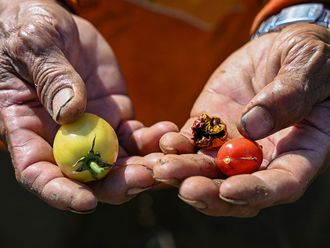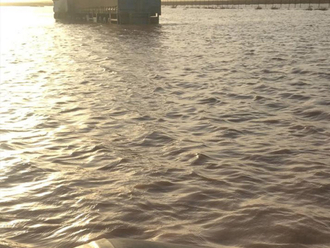Manila: The Philippine government has invited anti-ivory trade advocates to witness a historic crushing of P450 million (Dh35 million) worth of ivory tusks that were seized in 2005 and 2009, in a campaign to remove the country from a list of major transport hub for “blood ivories,” a senior official said.
Representatives of the secretariat of the Geneva-based Convention on International Trade in Endangered Species of Flora and Fauna (Cites), the Nairobi-based Lusaka Agreement Task Force, led by its chairman Bonaventure Ebayi, the National Geographic Africa, and member-countries of the Association of Southeast Asian Nations (Asean) will witness the destruction of five tonnes of Tanzanaian ivory tasks that were seized in 2005 and 2009, at the Ninoy Aquino Parks and Wildlife Centre in suburban Quezon City on June 21, said Environment and Natural Resources Secretary Ramon J.P. Paje.
Some five tones of ivory tusks will be crushed by a road roller and then burned. But some 8.1 tonnes of ivory tusks, the remainder of a total of 13.1 tonnes that were seized in 2005 and 2009, will be kept at a government vault, to be used for educational material and as evidences against already identified illegal traders of blood ivories, said Paje.
He added that the highlight of the celebration of June as an Environment Month will mark the Philippines’ campaign to raise regional awareness against illegal trade of ivories.
“Our decision to destroy these ivory tusks that entered the country illegally is to show to the whole world that the Philippines will not tolerate illegal wildlife trade,” Paje said.
Also invited to the historic event was Bryan Cristy, National Geographic journalist, and former lawyer in Washington, said Paje adding that government executives from the Department of Justice, the National Bureau of Investigation, Bureau of Customs, National Intelligence Coordinating Agency, and the Philippine National Police, will participate in the event
Meanwhile, a Catholic priest is still being investigated for having told the National Geographic earlier that ivory carvers in the Philippines are being used by smugglers of ivory, a source said.
A new law that calls for four years of imprisonment for illegal possession of ivory does not cover the Catholic Church’s collection of antique saints made of ivory.
The Philippines was a signatory of Cites in 1989. Adopted in March 1973, Cites bans the buying and selling of ivory to combat a massive illegal trade. It is meant to stop the dramatic decline of the elephant population in Africa because of illegal ivory trade that reached its height in the 1970s and 1980s.
In 1997, Cites’ Conference of Parties included the Philippines among nine countries involved in illegal ivory trade.
Kenya, South Africa, and Tanzania were identified as major sources of ivory in illicit trade; China and Thailand as destinations of illegal ivory; and Hong Kong, Malaysia, Philippines and Vietnam as trade routes and transit countries.












